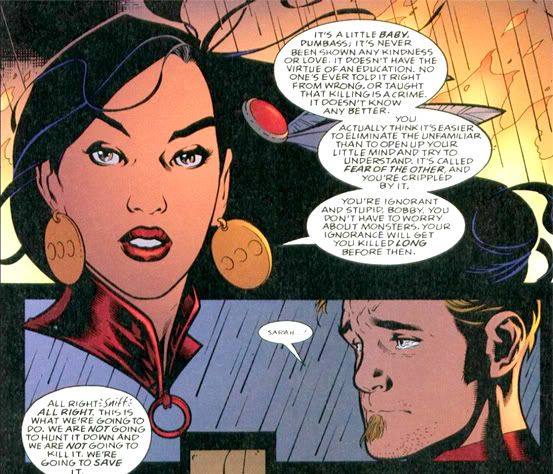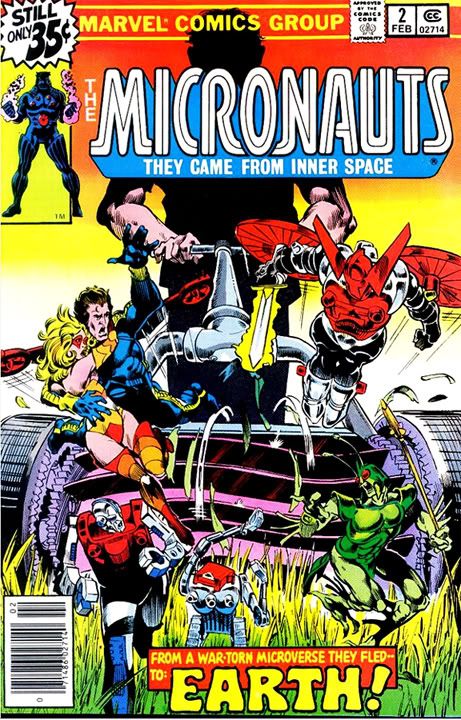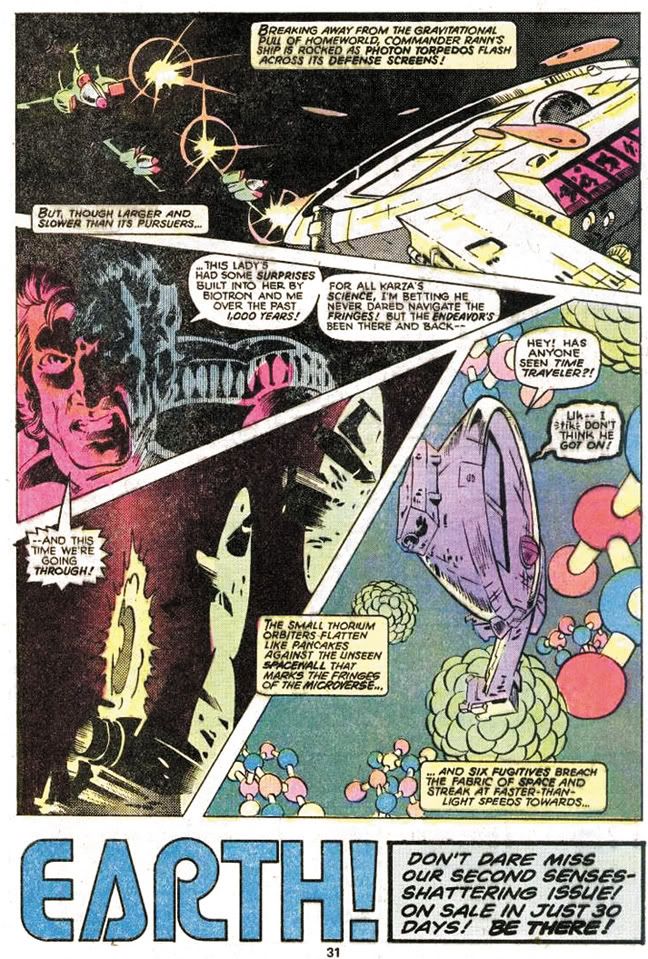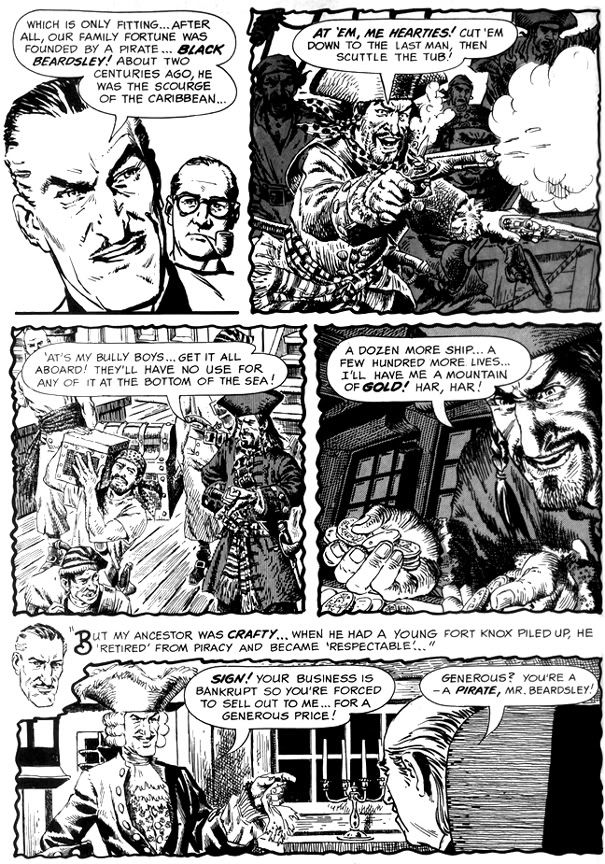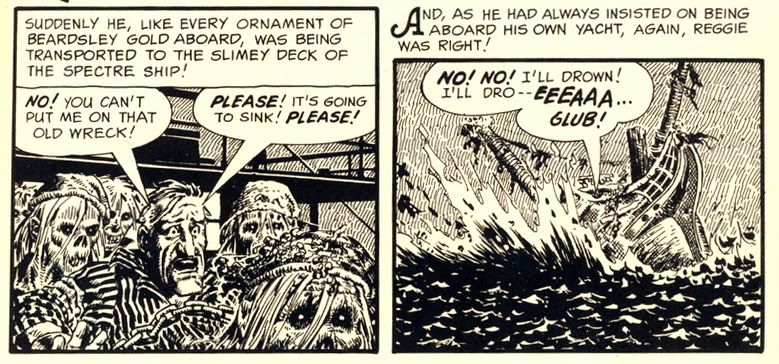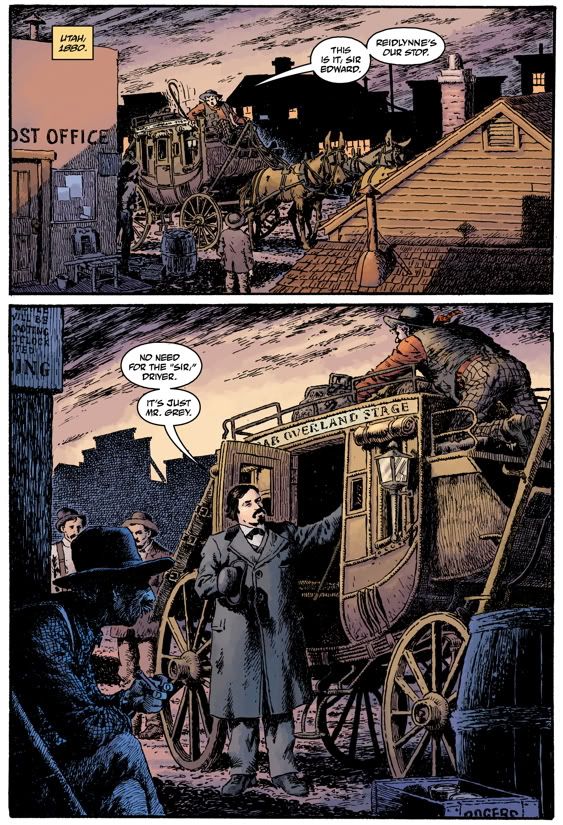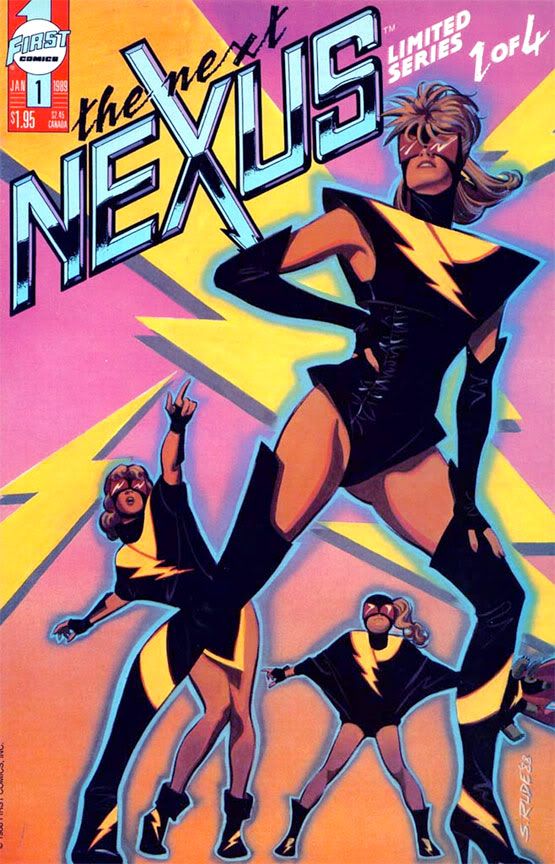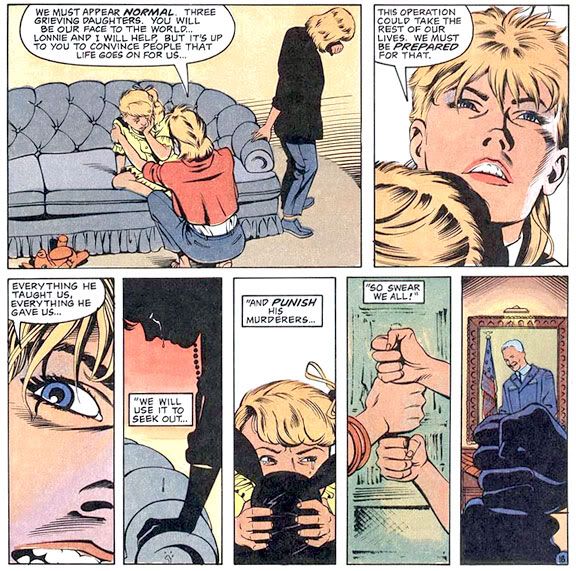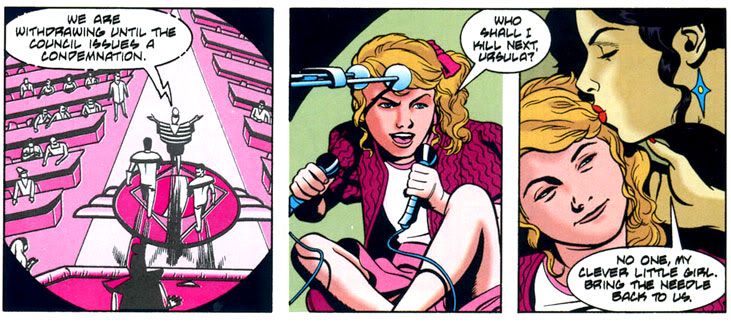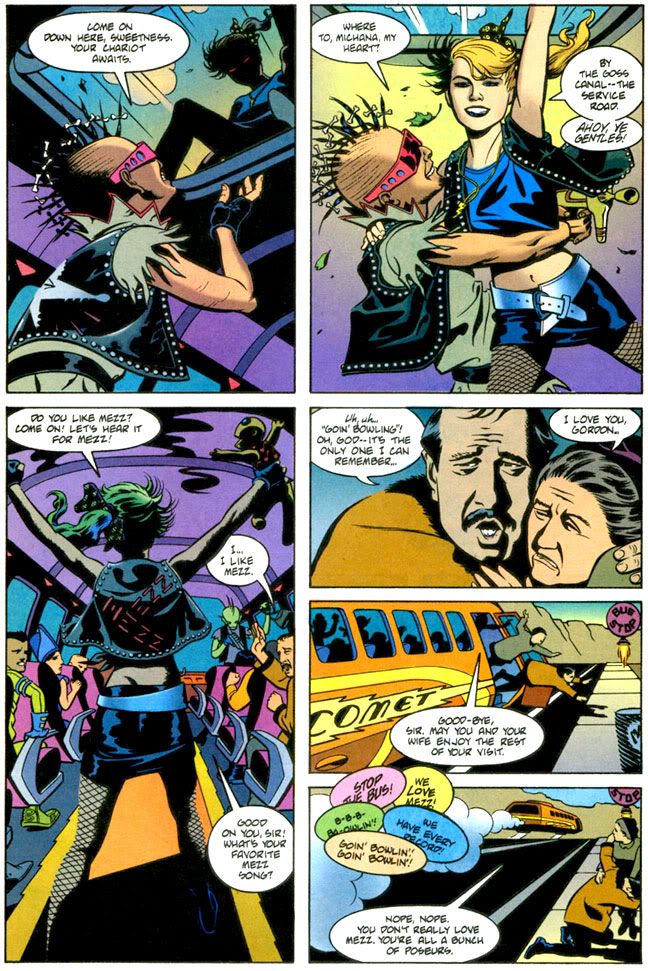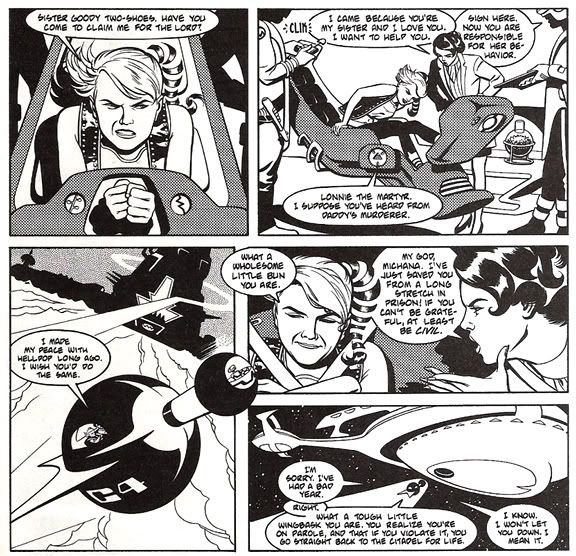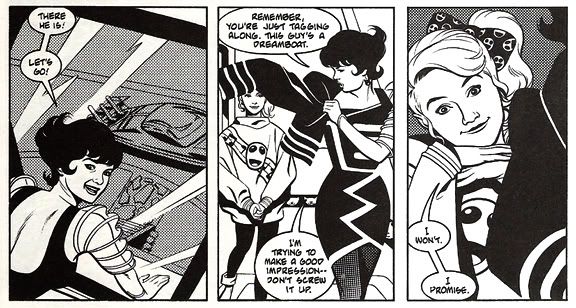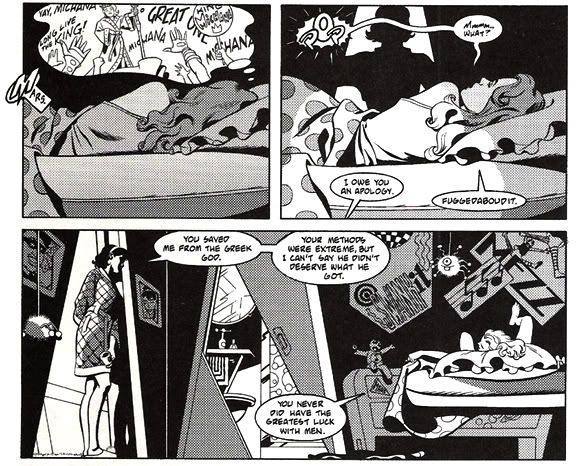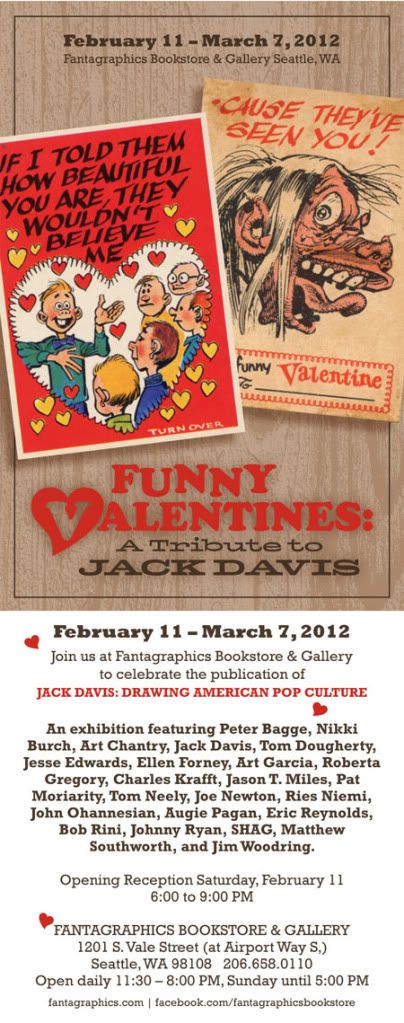 |
| Stab on, Slupe/Slupe, stab on... |
Barbarella was kind of amusing but even in our chemically-altered state we found it far less decadent than we'd been led to expect. Despite the infamous scene where Barbarella's inexhaustible sexual energy burns out a machine designed to orgasm her to death, these days it's practically tame, hardly even as risque as 1980's Flash Gordon where Ornella Muti wears a skirt slit all the way up... to... there...
Why am I telling you all this? Because this weekend I got on one of my Swingin' Sixties kicks and decided to watch the last scene of Barbarella on YouTube. I've always liked the last little exchange between Fonda and John Phillip Law as they fly into the credits. The last lines of Barbarella are cleverer than the entirety of most sci-fi movies these days-- the Star Wars prequels don't contain a single memorable line through six or so tedious, joyless hours-- and it's possible to enjoy even the seams in it when they show and its retrograde sexual revolution nonsense later spoofed by Mike Myers in his international man of mystery flicks.
 | |
| The movie version! |
So off I scampered to YouTube to get my fix...
And damned if I wasn't suddenly struck by the thunderbolt that is Anita Pallenberg as the Great Tyrant. As a movie trivia buff, I'd known this but I suppose it had never registered before now. Like the character she portrays, Pallenberg was some kind of formidable woman back in the day. She was born in Italy to German-Italian parents, spoke four languages as a child, studied medicine and graphic design, became a model, an actor, a musician, lover to Rolling Stone Brian Jones. Later she definitely some children with Keith Richards and supposedly had an affair with Mick Jagger. I've also heard she was very into Black Magic, so it's no wonder Jennifer Saunders tapped her to play the Devil opposite Marianne Faithfull's God in an episode of Absolutely Fabulous Then there was the incident in which she had to be cleared of manslaughter charges. She's almost 70 now, younger than my mom but looks ten or even twenty years older.
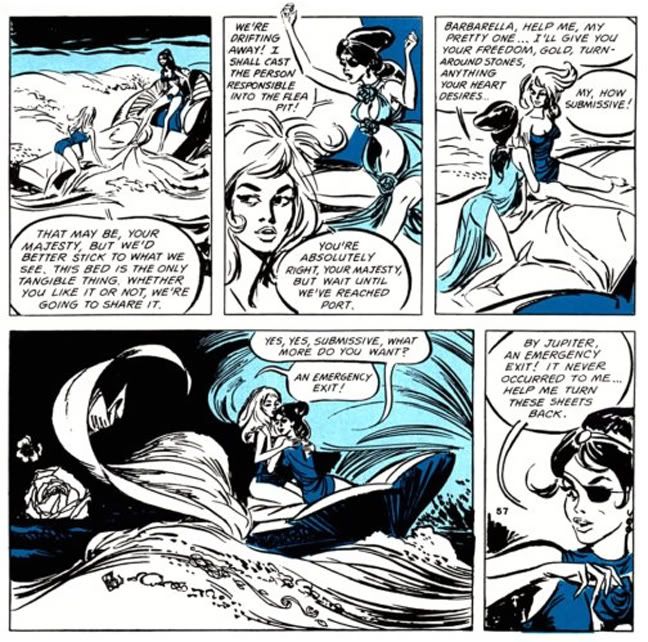 |
| Kind of makes me like tyranny... |
Pallenberg was only 23 or 24 when she played the Great Tyrant and when she smiles her face takes on a freshness-- an adorable quality even-- that belies both the character's nastiness and her own reputation. And the frequently idiotic costumes, like the one where they strap a horn to her forehead. Oh, and also the somewhat haggard overdubbed voice they stick her with. I don't know what Pallenberg's own voice sounded like at the time. Was it wispy and too girly for the Black Queen, or was she just not much for line readings? A sweet-voiced villain might have been interesting, especially contrasted along with that smile against the character's depravity.
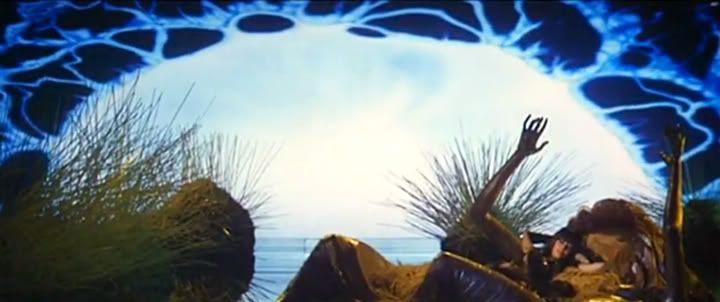 |
| Sweet dreams in Studio 27. |
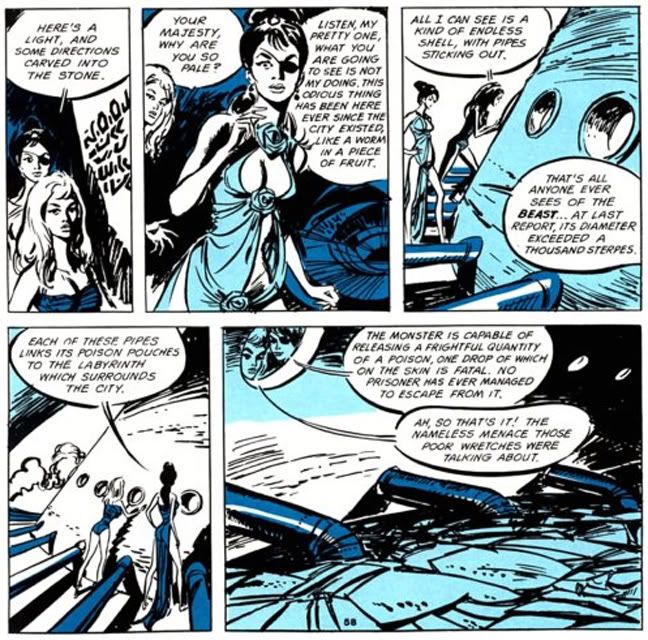 |
| The Queen isn't friends with it the way she is in the movie. |
Continuing on her way, Barbarella runs into a couple of creepy "beggers." They intend to do her harm, but a petite one-eyed woman in a skintight black bodysuit stabs them from behind, then tries to put some serious moves on Barbarella herself, despite only speaking broken English. Making her way to the palace, Barbarella gets involved in a revolt and learns her wicked little savior is actually the Queen herself. The Queen throws Barbarella into a giant birdcage where the birds conveniently peck off most of her clothes.
Barbarella learns the evil Queen has her own problems-- when she isn't coming up with new forms of perversion and torturing angels to "extend the frontiers of human pleasure," she's suffering from remorse-driven insomnia. She's like a one-eyed female Caligula. After a busy day making his horse Incitatus consul, torturing prisoners to death, spoofing religious rites, having sex with noblemen's wives right in front of them and dressing up like Venus, Caligula would spend a sleepless night wandering his palace inviting the moon to come to bed with him. Supposedly.
 |
| She just wants to be friends! |
And like both those emperors the Queen has her enemies. Barbarella is one, for righteous reasons, and even her own palace locksmith is completely fine with allowing Barbarella into the Queen's secret room of dreams to assassinate her. He betrays Barbarella as well. He locks her in with the helpless Queen as the deadly dream energy swirls. Waking, the Queen begs Barbarella to save her in exchange for submissive sex. Barbarella turns her down for the second time and they escape through a secret passageway in the Queen's bed.
But this little episode merely showcases one of the major flaws of being evil-- you attract other evil people as your followers and you can never trust them. I don't believe in this concept of evil. Usually the things we end up declaring evil take the form of groups of people convinced of their own virtue. The Nazis were the good guys in their own minds, terrorists of whatever stripe either political or religious feel their murders will improve the world somehow. Only in comic books and movies like Star Wars do we find antagonists who consciously embrace evil, and it almost always blows up in their faces. Sometimes that's even an intrinsic part of the evil system they follow. What Sith Lord hasn't been murdered by his apprentice?
 |
| You can't always get what you want... |
Oh, but she does have Pygar down there with his wings pinioned to what appears to be a giant bowling ball. For some reason, the Queen is especially proud of this detail, but it only succeeds in finally pissing off Barbarella, who attacks her, takes her prisoner and frees Pygar.
The threesome flies off into the labyrinth only to crash. Barbarella and Pygar reunite with Durand and all hell breaks loose. It seems some idiot-- the obvious suspect is the crazed Queen-- has let loose the watery monster and it's angrily poisoning everyone as it washes through the city and the labyrinth. Trapped, Barbarella and friends engage the city guards in a brief fight before the Queen shows up in what appears to be a flying Venetian gondola. Stepping out of it onto the rampart where the survivors wait, the Queen happily greets them. See, she really likes Barbarella. It's not just sexual attraction but a genuine fondness.
"Barbarella, my pet," the Queen says, cheerfully waving. "I was sure I'd find you safe and sound!"
Still miffed by the Queen's mistreatment of Pygar and completely outraged by the wanton destruction of life and property she's now witnessing, Barbarella's ready to finish her off-- "What nerve she has coming here! I'm going to disembowel her," our hero growls-- but the Queen explains this latest madness isn't her doing it all. In fact, although she politely declines to say so, it's kind of Barbarella's fault. Believing the Queen kidnapped by Barbarella, Gronf II, the "caretaker," chose to take advantage of the power vacuum by leading a palace revolt. Then he stupidly unleashed the beast. What a total jerk!
The Queen enlists Barbarella and Pygar to help her take back her throne, but it's too late. Even her mighty palace has collapsed. Beaten, the Queen laments, "Ah! Sogo's ruined, it's gone! Good-by my pleasures, my bed, my throne, good-by to life, good-by my crown!" She declares her end fitting, as "the queen cannot outlive her city" and prepares herself as her flying boat falls from the sky towards the deadly waters.
Barbarella turns to Pygar as her last hope and the angel flies her to safety. But he also takes the Queen, who hangs from his arm like a limp doll. Barbarella asks him why he saved her, and Pygar tells her, "An angel has no memory," and Sogo-- like Edgar Allen Poe's House of Usher-- consumes itself.
Like anyone adapting a comic, Vadim made a lot of changes great and small in the story. Durand-Durand becomes a villain, the Queen owns her evil a bit more, being linked to and gaining power from the Matmos beneath her palace rather than somewhat frightened by it. She puts some moves on Pygar in the movie and even dreams of him in her secret chamber, while in the comic she's more into Barbarella and just sort of offhandedly disposes of the angel.
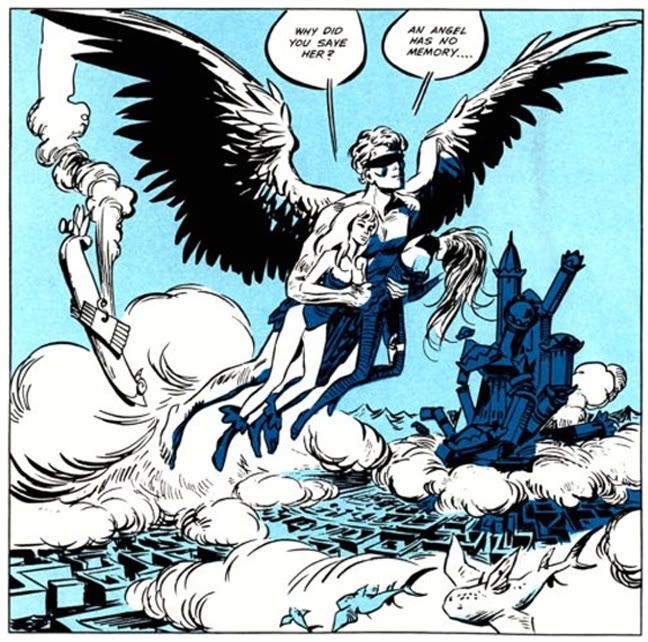 |
| It's true. We don't. |
Forest makes it quite terrifying, the queen's one attempt at executing her enemy, but in live action it's just Durand-Durand's way of torturing Barbarella for the audience's supposed titillation and to pad the film's running time. It appears vaguely Hitchcockian, like the clumsier moments of The Birds, but without the Master's touch to make it work anyway. While a number of sequences threaten her dignity-- scantily-clad Barbarella spends a great deal of time being tied up-- Fonda usually pulls through by relying on Barbarella's essential positive outlook. She cries for help when things get too bad, but mostly she just seems unfazed by all the insanity. Unfortunately, in the bird cage Fonda only looks ridiculous lying there pretending to be distressed while colorful birds flutter around playfully, completely sans aggression. Plus, she's already been pecked or bitten by tiny dolls once before in the movie; twice is gratuitous even by Barbarella's standards.
But here's the most important thing. Instead of dangling almost comatose from Pygar's arms with her hair in disarray and her face turned from us in abject defeat the way her comic avatar does, despite being measurably a worse person, the Black Queen of the movie gets to look directly into the camera with a kind of enigmatically pleased expression. Sure, she's ruined, but it makes one think she's already plotting a phoenix-like return to power. Or perhaps it's simply the afterglow from some well-played destruction. As played by Pallenberg, the Black Queen will never know true defeat. Fonda's Barbarella can only look on her persistent rival in dismay.
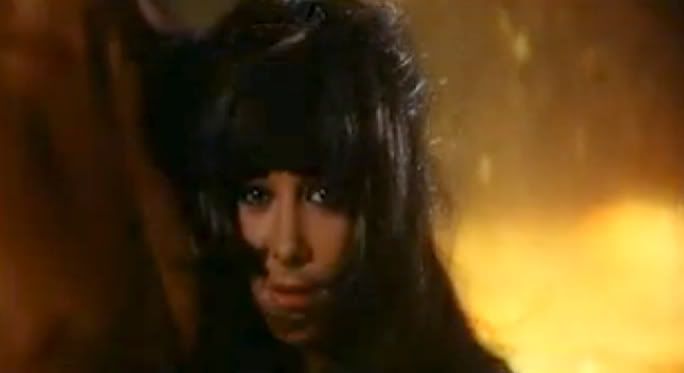 |
| The look of love... |
Speaking of... I need to re-read League of Extraordinary Gentlemen: Century #2 - 1969 to see if there are any Pallenberg references. This is the kind of thread-chasing I enjoy. The story opens with a riff on Brian Jones's death, so it just seems natural Alan Moore and Kevin O'Neill would do something with his lover or at least her 1960s image as a kind of real-life Black Queen of Sogo. If not, what a missed opportunity. Then again, she could probably consume the League in less than a page and put that Moon Child to rout. She probably would have cooked the damned thing in a spoon and injected him into her veins.




